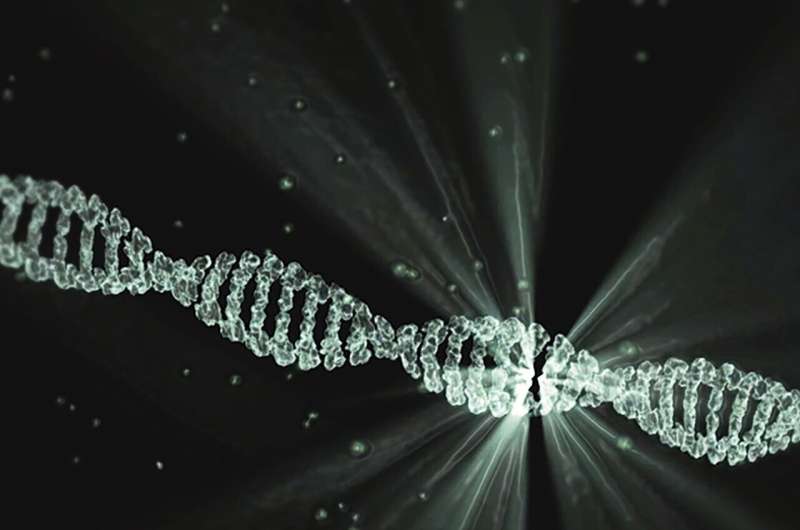New eDNA method opens doors for environmental research

With a single sample of water or soil, researches can analyze the DNA of everything that is living in that environment. During her research, Ph.D. candidate Beilun Zhao discovered a way to analyze not only the kind of species, but also the age of the species in a water sample. The method showed its first success with the great pond snail and is the first step to a whole new world of environmental research.
Every living being leaves behind traces of DNA wherever they go. That means that with a single sample of air, soil or water you can see which animals live in that environment. Until now, analyzing this so-called environmental DNA (eDNA), only gave information on what kind of species live in that environment. Zhao discovered a new method to also get information on the age of the species living in an aquatic environment.
"This goes way beyond the presence or absence of a species," Professor of Environmental Biology and promotor of Zhao, Peter van Bodegom says. "Information on the age of a group is essential in a lot of conservational and ecological studies. We want to know how the species is behaving, how the population is evolving and if it is reproducing. Is the group decreasing or improving and are our conservation or restoration efforts actually successful?"
The beginning of a new era in environmental research
Zhao used a method to get information on the different age categories of the great pond snail. "For the first time we could separate age classes from a water sample," Zhao says. "For now, we only tested it with this one species of snails. But the fact that it is possible, brings a bunch of new research opportunities."
The great pond snail is a very common species in aquatic environments, which makes it a good example to research. "In our research the age classes were separated in water tanks. Next, we will have to look how we can analyze the age classes when they are all together. For now we only tested four age classes, so we surely want to increase this. And of course, then we have to take it further and look at different kind of species to apply the method on."
In order to get the information on age, Zhao analyzed a kind of DNA modification called methylation. With this method, she looked at the eDNA methylation of the species at four age classes. That is possible because animals leave a different methylation pattern of the eDNA depending on their age.
"This method could eventually also be used to trace diseases and adaptations caused by environmental change. For example, when the temperature changes, the methylation in our body also changes."
A new tool in the eDNA toolbox
Both promotors of Zhao, Van Bodegom and assistant professor Krijn Trimbos have been working with eDNA for years and are very excited about the discovery. "The eDNA toolbox has stayed pretty stable over the last ten of fifteen years," Trimbos says. "This opens a whole new direction that you can apply to environmental and ecological studies and fill in the missing information. Age is such a central property of the populations build up. If one day you can add health to that, you get a very deep insight on how the species are doing."
Current research with eDNA already gives the opportunity to research species in a more animal and environmentally friendly way. "Instead of having to go through a specific bio monitoring scheme, such as trying to catch all the fish there are in the environment, you can take one sample and know it all," Trimbos says. "With the extra information on age, this will be easier and way more complete."
Zhao is very excited for further research into this method. "It's the first time that we can find information beyond the kind of species. That's very interesting. And this technique is also very cheap so it could be applied widely. It's quite contradictory to catch and hurt the species when you want to get information on them for an environmental study. With eDNA in general and this extra method, research can be done way more easily without hurting the fish."
Provided by Leiden University


















